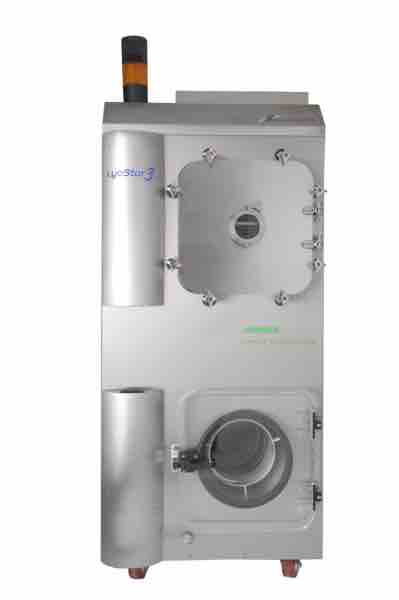Desiccation is the state of extreme dryness, or the process of extreme drying. In biology and ecology, desiccation refers to the drying out of a living organism. Microorganisms cannot grow and divide when desiccated, but can survive for certain periods of time, depending on their features. After the addition of water, the bacteria will start growing again, so desiccation does not provide complete sterilization.
Some bacteria, such as Deinococcus radiodurans and Mycobacterium, are extremely resistant to damage from prolonged desiccation while others, such as Neisseria gonorrhoeae, can survive only short periods of desiccation.
Pharmaceutical companies often use freeze-drying as a desiccation tool to increase the shelf life of products, such as vaccines and other injectables. By removing the water from the material and sealing the material in a vial, the material can be easily stored, shipped, and later reconstituted to its original form. Preservation is possible because the greatly reduced water content inhibits the action of microorganisms and enzymes that would normally spoil or degrade the substance. Another example from the pharmaceutical industry is the use of freeze-drying to produce tablets or wafers.
Drying is also a method for food preservation that works by removing water from the food, which inhibits the growth of microorganisms. Open air drying using sun and wind has been practiced since ancient times to preserve food. A solar or electric food dehydrator can greatly speed the drying process and ensure more consistent results. Water is usually removed by evaporation (air drying, sun drying, smoking, or wind drying) but, in the case of freeze-drying, food is first frozen and then the water is removed by sublimation. Bacteria, yeasts, and molds need the water in the food to grow, and drying effectively prevents them from surviving in food.
Freeze-drying is performed using special equipment . Two components are common to all types of freeze-dryers: a vacuum pump to reduce the ambient gas pressure in a vessel containing the substance to be dried, and a condenser to remove the moisture by condensation on a surface cooled to −40º to −80ºC.

SMART Freeze Dryer
New freeze dryer which is equipped with systems for immediate feedback on the properties of the dried product, eliminating the lengthy trial-and-error approach.